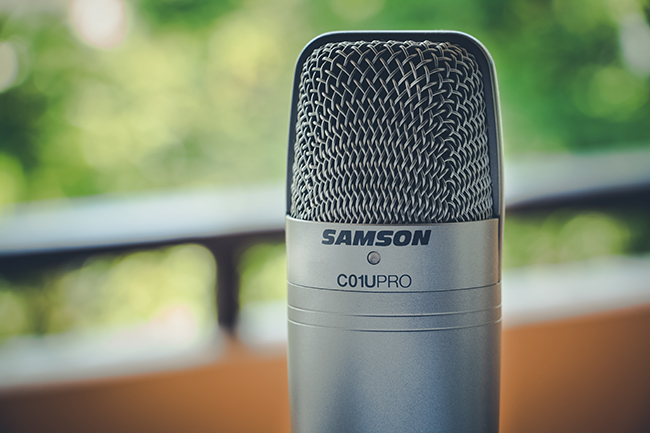
Photo courtesy of MusicOomph.com.
Public distrust and negative attitudes toward media are critical problems facing many news organizations. This distrust feels deepest among particular alienated groups — such as conservatives, or neighborhoods where a minority group is the majority — with whom many publishers have scant or shallow ties.
Building trust with these disengaged or neglected communities will require many approaches. Some solutions address news content, such as transparency in reporting or angles of stories. But other solutions strengthen relationships. Notably, some news organizations are confronting the issue through listening.
We’ve paid particular attention over the past few months to newsrooms seeking to listen to the audiences they don’t already have.
With the help of Ashley Kang, director of Syracuse University’s South Side Community Newspaper Project The Stand, we’ve gathered examples of focused listening projects — efforts to hear from particular populations newsrooms recognize they need to better understand, reach and serve. These populations may vary from racial and ethnic, socioeconomic, gender, religious, political or even interest-based definitions.
[pulldata context=”Here’s four examples of how ‘focused listening’ can help address journalism’s trust problem.” align=right]Focused listening — in which newsrooms make efforts to listen to their underserved or disengaged audiences — demonstrates that a news organization cares about people like you. In the examples we’ve found, such projects are an important foundation for establishing trust. The first step in any good relationship is hearing one another.
But don’t take our word for it. We asked four journalists in communities across the country to explain in personal essays the listening approaches they’ve used to deepen ties with communities they want to better serve. Each of these essays outlines the sources, story ideas, relationships and benefits their newsrooms have received from such efforts. They also do not shy away from sharing the challenges they came up against.
The four essays in this collection are:
- “How The Tennessean hosts meetings with alienated audiences to listen and understand.” In Tennessee, The Tennessean invites specific communities to dialogue with its staff through in-person listening events hosted at its building. The conversations help journalists understand the issues and perspectives of communities newsroom staff may not know as well as they’d like. Among the first groups, writes Director of Opinion and Engagement David Plazas, were Muslim leaders as well as gunowners — and the insights led to story ideas, sources and nuance to inform coverage.
- “How a Boston nonprofit newsroom starts its listening by popping up where people live and play.” In Massachusetts, the Boston Institute for Nonprofit Journalism has piloted pop-up newsrooms — simple efforts to be present in neighborhoods the organizations want to serve. This includes the Roxbury neighborhood of Boston, one of Boston’s historically black neighborhoods. Showing up and listening, writes the nonprofit’s co-founder Chris Faraone, has deepened source and audience relationships between Boston neighborhoods and the young nonprofit.
- “How Richland Source held an event to serve local mothers — and listened, too.” In Ohio, digital-only startup Richland Source organized an event to serve one local population — mothers — and listened in the process. Helping mothers as well as setting up a Listening Post, writes reporter Brittany Schock, provided deeper insight into the joys and fears of Ohio moms and fit their mission as a community connector.
- “How Alabama Media Group uses simple text-messaging to listen to diverse voices.” In Alabama, an Alabama Media Group journalist digitized his listening activities, building off a fellowship with the Reynolds Journalism Institute. Creating news “deputies” from particular backgrounds including immigrant communities and families with members who have been incarcerated, writes Connor Sheets, has demonstrated that some focused listening efforts can be augmented by digital tools.
The essays demonstrate the impact this focus can have in engagement work. If the reflections leave you more curious, the authors have graciously included their contact information to answer questions. And to learn more about the role of listening in journalism, check out our page of listening resources from API and others working on this issue.
Share with your network
- ‘Focused listening’ can help address journalism’s trust problem — here are four examples
- How The Tennessean hosts meetings with alienated audiences to listen and understand
- How a Boston nonprofit newsroom starts its listening by popping up where people live and play
- How Richland Source held an event to serve local mothers — and listened, too
- How Alabama Media Group uses simple text-messaging to listen to diverse voices
You also might be interested in:
The Houston Chronicle created small-scale experiments that tested how strategically work with a creator while navigating potentially thorny issues around ethics, control and impact. In this series, they walk you through what they did.
Every community has a commons — a park, a library, a garden — a shared space that only thrives when people care for it together. Our local information ecosystems are no different. At our recent Local News Summit, we asked the room: What does it mean to be gardeners, guards and stewards of the local information commons?
We know psychological safety might feel like a ‘nice to have,’ but what if the failure to create that safety is silently stalling your best ideas and alienating your next generation of leaders?


